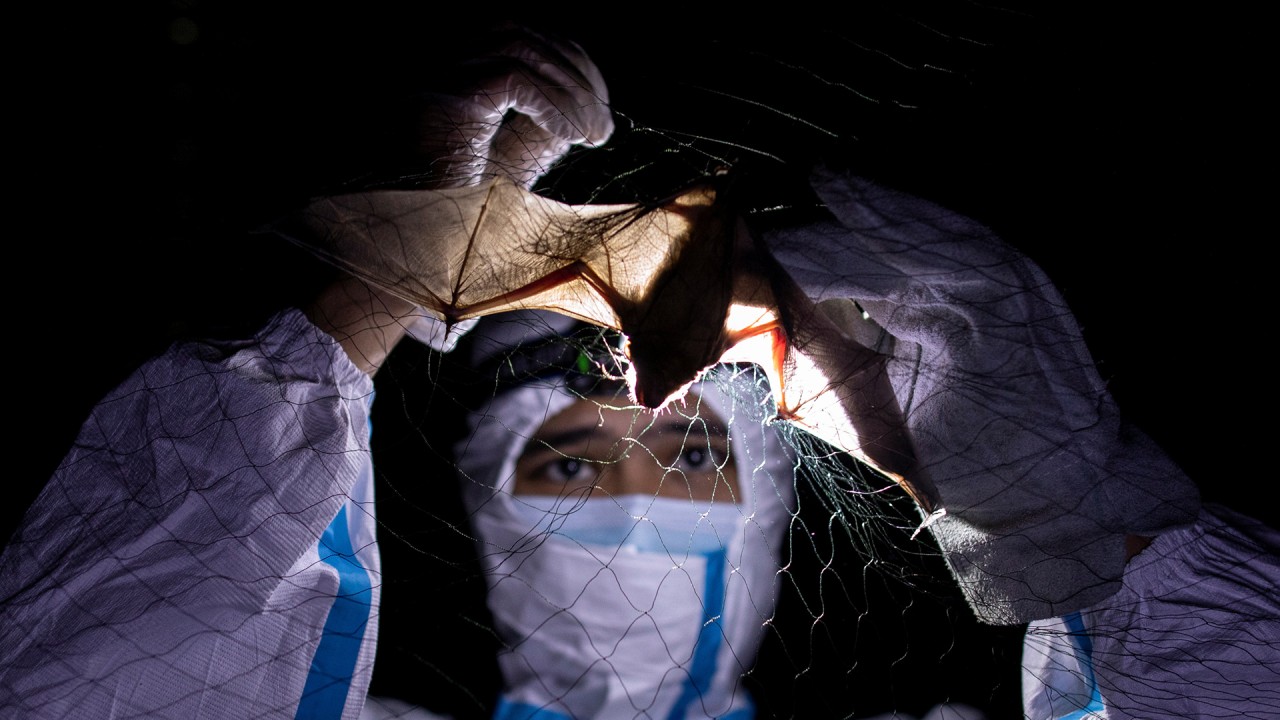
Coronavirus: report on WHO-led Wuhan mission leaves unanswered questions
- Scientists say inquiry was useful, but document reaches no conclusions on how virus spread to humans or even if it originated in China
- Chinese and international teams agree more research is needed
The 300-page-plus document provides interesting hints of information: there was a rise in acute respiratory illness among the elderly in Wuhan in early December 2019, several weeks before doctors identified an outbreak in the city, and more than half of Wuhan’s earliest known cases had some connection to food markets.
Tens of thousands of animals from hundreds of species, including rhinoceros and alpaca, were tested for the virus or its antibodies in China, but more targeted research on wildlife farms in bat virus hotspots remains to be done. China has not widely tested blood bank samples stored from 2019 in Wuhan that could provide more clues about early spread.

The report is the first time that the extent of the research done by Chinese scientists has been laid out. Its findings have been met with scepticism by the US and others, and the WHO director general said the international team had difficulty accessing raw data.
Scientists and the WHO said the report – a joint effort of Chinese and international scientists who worked together in Wuhan for 28 days – was an important step forward. But it also reveals gaps in the evidence collected, and leaves many unanswered questions:
When did the virus first start spreading in people?
The earliest known confirmed case is from December 8, according to China’s official data. The team did not turn up evidence of substantial transmission of the virus in Wuhan in the two months before that but they said that did not mean there were no cases.
“We can’t exclude that might have been milder cases or smaller epidemics that have gone under the radar,” international team member and Danish researcher Thea Fischer, said.
Finding earlier cases could bring crucial clues and the team proposed a number of ways to keep looking. One is testing stored samples from 2019 from local blood banks. Another is running a new analysis of records from over 76,000 respiratory patients in the two months before the outbreak. Both are things the team was not able to do while in Wuhan, members said.
Evolutionary virologist Edward Holmes, who was not involved in the investigation, said it was “blindingly obvious” that there were cases in November, pointing to diversity in the virus strains already circulating in December.
“We all know there’s always a bit of undetected transmission before you see the first case,” said Holmes, a professor at the University of Sydney in Australia.
Did the virus come from China?
Where the virus came from remains unknown and the report recommends more study in China and elsewhere, with a focus on Southeast Asia.
Meanwhile the report questioned the quality of preliminary studies from other parts of the world indicating there could have been earlier circulation of the virus there. Such cases could also still be linked to China, team leader Ben Embarek said.
Linfa Wang, a professor of emerging infectious disease at Duke-NUS in Singapore, said the most important next step was collaborative research in areas home to the Rhinolophus bats known to host related viruses, namely southern China and Southeast Asia.
“We need to do much more sampling until we find the virus which is 99.9 per cent identical, and then we worry about how that virus ended up in Wuhan,” said Wang, who is already involved in such work but was not part of the mission.
What animals spread the virus to humans?
The research team found it was very likely the virus passed from a reservoir animal like a bat, or possibly a pangolin, into another animal, before spreading into humans. Mink, pangolins, rabbits, raccoon dogs and domesticated cats are all suggested as possible intermediary animals.
Chinese scientists tested tens of thousands of animals across the country for traces of past or active infections, but said no positives were found. But the report suggested such a broad strategy could have missed infections.
Daniel Lucey, an infectious disease specialist at Georgetown University, said he was surprised such work had not already been done, especially given that these farms might have been closed. Last year, China banned the trade of wildlife for consumption.
“If the farms in Yunnan were shut down, then why wasn’t testing done on farmers and animals at that time?” Lucey said. “If you wait for 12 months, 13 months, 15 months, the virus isn’t there any more.”
The report made little mention of the possibility of the role of illegal wildlife trafficking.

Did the Huanan market play a role?
It is still not clear if the Huanan market was where the virus spilled into people or if the disease just spread quickly there.
The report said there were “no verified reports” of live mammals being sold at the market, and none of the frozen animals found there, including rabbits, hedgehogs and weasels, tested positive.
Infectious disease specialist Dale Fisher, a professor of medicine at National University of Singapore, said another option was that someone exposed to an infected animal outside Wuhan could have introduced the virus into a market.
“It probably happened in China … probably somewhere that supplies that market and when that person went to the market, there was an amplifying event,” he said.
Did it come from a lab?
Most scientists agree it is more likely the virus emerged from natural contact with animals, but WHO director general Tedros Adhanom Ghebreyesus said the mission assessment of the lab was not extensive enough.
“Further data and studies will be needed to reach more robust conclusions,” he said this week.
Will there be another mission?
Tedros said: “It is clear that we need more research across a range of areas, which will entail further field visits.”
But whether those will be in China remains unclear. The lead of the Chinese scientific team, former National Health Commission official Liang Wannian, on Wednesday said future missions to China would depend on the progress of global efforts tracing the origins of the virus.
The WHO and other scientists have long stressed that uncovering the origins of a virus can take years and could depend on a bit of luck.
“If the stars align, we could get an answer,” Fisher said. “But if that doesn’t happen, then we might just end up with [an idea of] the most likely scenario.”




